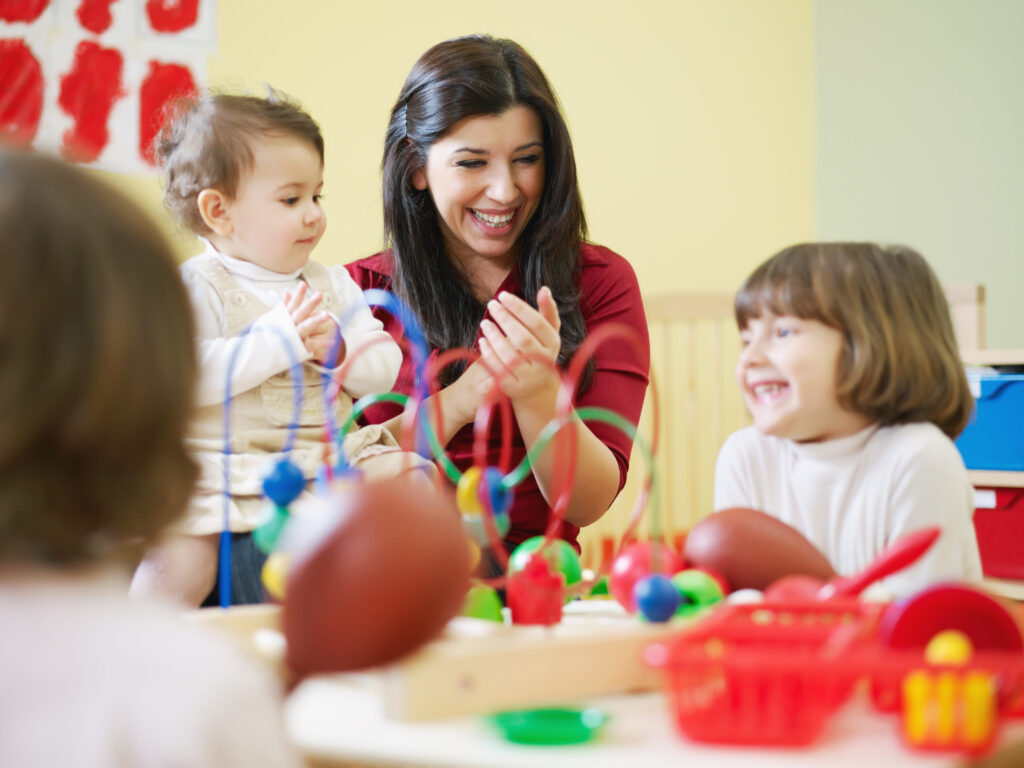How Positive Reinforcement Shapes Growth Mindset in Children

In today’s rapidly evolving educational landscape, fostering a child’s growth mindset is essential for their overall development. This approach emphasizes the power of perseverance, resilience, and learning from failure. Among the various strategies employed, positive reinforcement stands out as a pivotal tool in shaping children’s attitudes towards challenges.
Understanding how positive reinforcement influences this growth mindset can lead to significant benefits, including:
- Enhanced motivation to tackle difficult tasks.
- Increased self-esteem and confidence.
- A greater willingness to embrace constructive feedback.
As educators and parents, adopting effective reinforcement techniques can pave the way for a generation that views learning as a lifelong journey. In this article, we will explore the top five strategies that highlight the power of positive reinforcement in nurturing a growth mindset in our children. Prepare to discover actionable insights that can transform the way you inspire and guide young minds.
LEARN MORE: This related article may interest you
The Influence of Positive Reinforcement in Building a Growth Mindset in Children
In today’s rapidly evolving world, fostering a growth mindset in children is more crucial than ever. The concept of a growth mindset, popularized by psychologist Carol Dweck, revolves around the belief that abilities and intelligence can be developed with time and effort. This mindset stands in contrast with a fixed mindset, where individuals believe their capabilities are static and unchangeable. The way children respond to challenges and setbacks can significantly determine their future successes, impacting their motivation, resilience, and capacity to learn. One of the key techniques to instill a growth mindset is through the application of positive reinforcement. Positive reinforcement involves rewarding desirable behavior to reinforce the behavior’s reoccurrence. This article ranks the top five influences of positive reinforcement on developing a growth mindset in children.

5. Boosting Confidence and Self-Esteem
Positive reinforcement plays a vital role in enhancing a child’s confidence and self-esteem. When children receive recognition for their achievements, they feel valued and are more likely to take on new challenges. This acknowledgment creates a supportive environment that encourages children to explore and take risks without the fear of failing. Here are some effective ways to boost confidence through positive reinforcement:
- Verbal Praise: Telling children they did a great job increases their internal motivation. Verbal affirmations help children understand that their efforts are seen and appreciated, promoting a positive outlook towards their abilities.
- Non-Verbal Cues: A simple smile or thumbs up can convey acceptance and encouragement. Non-verbal signals can be particularly effective in reinforcing good behavior without interrupting activities.
- Specific Feedback: Highlighting specific actions that were commendable makes children aware of their strengths. Constructive feedback that focuses on what was done correctly helps children to build on those skills in the future.
4. Encouraging Persistence and Resilience
Positive reinforcement is instrumental in teaching children the value of persistence. When challenges arise, children who have experienced reinforcement through their efforts are more likely to remain committed. They learn that setbacks are not failures but opportunities for growth. Here are several insights into how positive reinforcement fosters resilience:
- Celebrating Efforts: Rewarding hard work over mere outcomes encourages a focus on process rather than perfection. This approach helps children to internalize the belief that their efforts will eventually lead to success.
- Modeling Resilience: Adults can reinforce the idea that overcoming obstacles is part of learning by sharing their struggles. By doing so, children can see that persistence is part of everyone’s journey.
- Promoting Problem-Solving: Offering praise for creative solutions nurtures analytical and critical thinking skills. Encouraging children to think of different ways to solve a problem helps develop flexible thinking.
3. Enhancing Motivation and Engagement
Children are inherently curious, but maintaining that curiosity can often be challenging. Positive reinforcement energizes their motivation and engagement in both academic and extracurricular activities. Here’s how it works:
- Creating a Positive Learning Environment: When rewards are associated with learning, children develop a love for discovery. This environment transforms learning from a duty into a pleasure, fostering excitement to learn.
- Setting Achievable Goals: By recognizing milestones, children are driven to pursue larger objectives. Small, intermediate goals serve as stepping stones that keep children focused and motivated.
- Fostering Teamwork: Group activities can lead to collective reinforcement, enhancing social interactions and bonding. Team-based tasks, when positively reinforced, help develop social skills and cooperative working habits.
2. Shaping a Growth-Oriented Perspective
The reinforcement of effort and improvement leads to the development of a growth-oriented perspective. Children begin to understand that intelligence and talent are not fixed traits but can be developed through dedication and hard work. This shapes their approach to challenges and learning. The importance of perspective is illustrated through these key elements:
- Rewarding Curiosity: Encouraging questions and exploration nurtures an inquisitive mindset. Children who feel safe to question and explore are more likely to engage deeply with the material they learn.
- Emphasizing Progress: Recognizing small achievements allows children to see the impact of perseverance. This emphasis supports the understanding that consistent effort leads to improvement over time.
- Accepting Mistakes: Normalizing errors as part of the learning process prepares children for real-life challenges. Children who learn to view mistakes as learning experiences become better problem solvers.
1. Building Long-Term Educational Success
The most significant influence of positive reinforcement on a child’s growth mindset is its capacity to build a foundation for long-term educational success. Through continuous encouragement, children learn to approach learning as a fulfilling journey rather than a chore. The following factors underscore its importance:
- Adapting to Change: Children become adaptable learners, ready to embrace new and unexpected concepts. Adaptability in learning ensures they can handle changes in academic environments smoothly.
- Developing Strong Work Ethics: A consistent reinforcement system encourages diligence and responsibility. As children grow, these qualities become integral to achieving their academic and personal goals.
- Instilling Lifelong Learning: Cultivating a love for learning that extends beyond school translates into adult life and career growth. Lifelong learning is critical in a world that values continuous adaptation and development.
In conclusion, positive reinforcement significantly shapes the way children build their growth mindset. By understanding and harnessing its influences, parents, educators, and mentors can create a supportive environment that empowers children to not just succeed academically, but to thrive resiliently throughout their lives. Incorporating positive reinforcement strategies is about more than academic success; it is about preparing children to face life’s myriad challenges with confidence and adaptability.
| Category | Description |
|---|---|
| Emotional Development | Positive reinforcement nurtures a child’s sense of self-worth and fosters resilience. It encourages children to embrace challenges rather than shy away from them, aiding in emotional intelligence. |
| Cognitive Growth | By rewarding effort and progress, children learn that intelligence and abilities can be developed through practice. This belief not only enhances their motivation but also elevates their ability to tackle complex problems. |
| Social Skills Enhancement | Research shows that children who receive consistent positive feedback are more likely to engage in cooperative play and build supportive friendships, which are essential for teamwork and collaboration. |
| Long-Term Achievement | Instilling a growth mindset through positive reinforcement significantly correlates with lifelong learning and achieving future goals. Children grow to view failures not as setbacks, but as opportunities to learn and grow. |
ADDITIONAL INSIGHTS: Expand your understanding here
Frequently Asked Questions about Positive Reinforcement and Growth Mindset in Children
What is the role of positive reinforcement in developing a growth mindset in children?
Positive reinforcement plays a crucial role in nurturing a growth mindset by encouraging children to embrace learning and persistence. When children are praised not just for their innate abilities but for their efforts and improvements, they start to value growth over static intelligence. This form of reinforcement helps them understand that skills and intelligence can be developed with effort, perseverance, and dedication.
How can parents and educators effectively implement positive reinforcement?
Parents and educators can implement positive reinforcement effectively by providing specific, genuine praise that focuses on effort, strategies, and progress. For instance, instead of simply saying “You’re so smart,” one might say, “I really appreciate how you tackled that difficult problem until you solved it.” This strategy emphasizes the process and encourages a love for learning. Consistency and authenticity in feedback are key to reinforcing a growth-oriented mindset.
Are there potential downsides to using positive reinforcement?
While positive reinforcement is largely beneficial, it can have potential downsides if not implemented carefully. If children receive praise that feels exaggerated or insincere, they might become dependent on external validation rather than developing intrinsic motivation. It’s essential to strike a balance, making sure that the focus remains on effort and development rather than solely rewarding outcomes or behaviors.
How does positive reinforcement differ from other motivational strategies?
Positive reinforcement differs from other motivation strategies, such as punishment, by creating a supportive and encouraging environment that fosters intrinsic motivation. Unlike negative reinforcements that may deter undesirable actions through fear or avoidance, positive reinforcement actively promotes desired behaviors and attitudes by celebrating achievements and progress. This approach not only boosts confidence but also instills a lasting passion for personal development.
CHECK OUT: Click here to explore more
Conclusion
The influence of positive reinforcement on nurturing a growth mindset in children is both profound and transformative. Throughout the article, we have explored various aspects of how positive reinforcement plays a vital role in fostering resilience and adaptability in children. This approach not only encourages them to embrace challenges but also enhances their ability to learn from setbacks. The concept of a growth mindset, championed by psychologist Carol Dweck, forms the bedrock of this philosophy. It emphasizes the belief that abilities and intelligence can be developed through dedication and hard work.
Positive reinforcement, when strategically applied, acts as a powerful catalyst in this developmental process. By celebrating efforts rather than innate talents, children learn to value persistence and diligence. The nurturing environment created through positive reinforcement also develops their self-confidence and intrinsic motivation. Moreover, it lays the foundation for lifelong learning and curiosity, critical skills in an ever-changing world.
An intriguing aspect worth noting is the way positive reinforcement aids in reshaping the neural pathways related to learning and behavior. This reinforces the notion that the brain is malleable and responsive to positive stimuli, making the case for sustained application of these techniques in educational settings. Educators and parents alike must understand the importance of constructive feedback and the praise of effort, as it can significantly impact a child’s emotional and cognitive development.
In summary, the application of positive reinforcement as a tool for fostering a growth mindset in children is essential for their holistic development. It empowers them to become proactive learners and resilient individuals. As such, the conversation on this topic should continue, encouraging further research and innovation in educational practices to better support our children’s growth.
Related posts:
Positive Reinforcement in Family Communication: Strengthening Growth Mindset Among Parents and Child...
The Importance of Positive Reinforcement in Developing a Growth Mindset in Children
Positive Reinforcement Strategies Fostering Growth Mindset at Work
Positive Reinforcement in Personal Development Programs: Fostering a Growth Mindset in Adults
The Integration of Positive Reinforcement in Sports Practice: Fostering a Growth Mindset in Athletes
Positive Reinforcement in Virtual Environments: Stimulating a Growth Mindset in Online Students

Linda Carter is a writer and self-discipline expert specializing in personal growth, habit building, and goal achievement. With extensive experience helping individuals develop focus, consistency, and resilience, Linda shares her knowledge on our platform. Her goal is to empower readers with practical advice and strategies to cultivate self-discipline, make intentional choices, and achieve success in both their personal and professional lives.